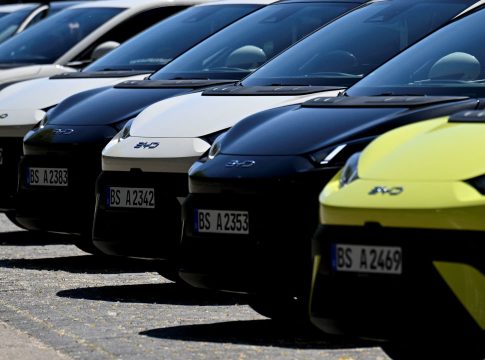China’s Electric Car Price War: What You Need to Know
The battle for electric vehicle (EV) supremacy in China is heating up, creating both challenges and opportunities for automakers. As companies vie for market share, price competition shows no signs of easing.
Sales Trends: Who’s Up and Who’s Down?
Recent data from the China Passenger Car Association reveals that Tesla‘s sales in the region dropped 15% year-on-year in May. In stark contrast, BYD, China’s top EV manufacturer, managed a 14% increase in sales. However, even BYD is feeling the pressure and has resorted to significant discounts to keep pace with demand.
Industry analysts expect ongoing price wars, especially as BYD struggles to meet its sales targets. “We anticipate additional price competition in the coming weeks,” noted Xiao Feng, a CLSA analyst.
The Smart Money: Who to Watch?
CLSA remains optimistic about BYD, giving it an outperform rating and setting a price target of 483 HKD (approximately $61.55). But when it comes to investment potential, they see Geely as the "best positioned" contender, thanks to its balanced internal structure and focus on competitive pricing.
Geely’s various EV brands, including Galaxy, Zeekr, and Lynk & Co., are gaining traction with consumers, particularly among those looking for alternatives to BYD’s popular models. Analysts predict that Geely’s continued success lies in its ability to roll out new models rapidly and maintain competitive pricing.
Promising Alternatives: Xpeng and Others
Xpeng, a U.S.-listed competitor, is also worth watching. Analysts project robust market share growth thanks to its advanced driver-assist systems and new model launches. With over 30,000 cars delivered in May, Xpeng is on track for a seventh consecutive month of strong sales. Their lower-priced Mona brand adds to their appeal.
Leapmotor and Li Auto are more stable players, each delivering over 40,000 vehicles last month. While Leapmotor is carving out a niche with cost-effective models, Li Auto has maintained profitability thanks to its premium SUV lineup, which includes a unique gas tank that enhances driving range.
The Road Ahead: Will the Price War Stabilize?
Industry experts point to the current overcapacity—more than 50 million units versus an annual sales volume of 25-27 million vehicles—as a factor that may eventually stabilize the market. This stabilization might only come after a few years of consolidation or higher demand.
The narrative around BYD is shifting as it looks toward overseas expansion, particularly in Europe, where investor sentiment remains more optimistic. In short, while the price wars in China are fierce, the long-term outlook for certain players remains bright.
Takeaway: For consumers and investors alike, understanding the shifting dynamics in China’s EV market can offer valuable insights into which companies may thrive—and which may face tough times ahead. Whether you’re eyeing the latest models or considering where to invest, keeping an eye on sales trends and market strategies will be crucial.

Writes about personal finance, side hustles, gadgets, and tech innovation.
Bio: Priya specializes in making complex financial and tech topics easy to digest, with experience in fintech and consumer reviews.

